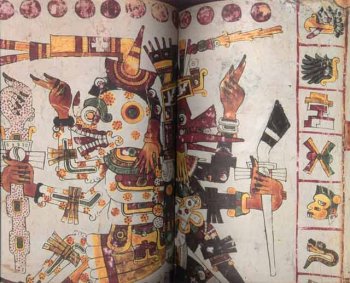Buddy Thomason
Well-Known Member
Surely the war or fighting club in one form or another has been around for many thousands of years. Ancient artifacts feature stone skull crushers and it is likely that flint, bone, antler and metal versions evolved from those crude and primitive tool/weapons. In collecting circles pipe hawks seem to have dominated though among these collections one invariably finds a few clubs including the plain wood or stone ball clubs, ball clubs with an additional skull breaker added and gunstock clubs with piercing points.
When we think of war clubs today it is primarily in association with North American native tribes during the late 1600s through the early 1800s. The gunstock club's early development is unknown but appears to have evolved after European muskets became known to native Americans, first in the East and later in the West. Interestingly, actual gunstocks were not used but rather inspired the gunstock shape. Hard, dense woods were used and gunstock clubs typically weighed several pounds. They were remarkably lethal weapons in close combat. It is reported that gunstock clubs were predominantly used by Northern Woodland and Central and Northern Plains tribes. Sorting out who made them is a problem because they were known to have been made by native tribesmen as well as Europeans who flooded North America with 'trade' knives, hawks and clubs during the fur trade era. After the rifle became common these clubs seem to have been relegated to ceremonial use.
I don't know if Mike had a specific historical example in mind when he designed the beautiful gunstock club below but he has expertly crafted one with the qualities of a real weapon. Its OAL is 29 1/2 inches and the blade is 4 3/4 inches. The attractive blade shape resembles the spear, leaf and spontoon (minus the crossbar at its base) styles. It weighs 2 lbs 7 oz with the main mass located from the blade to the armored end furthest from the ball 'pommel.' It is perfectly balanced for its intended purpose. And yes, I did swing it around a bit while it was visiting my studio. It just feels and handles like what I imagine is the real deal, something that is true of everything I've handled made by Mike! And that's why I'm a fan with a bunch of his blades in my own collection. AND, how 'bout that curly "Tiger" Maple! Amazingly beautiful with depth, color and exquisite figuring. Enough talk - here it is:

I had fun shooting this one so I did a secondary image (below) showing two views of the club and a view of the club in its shoulder carry sheath, also crafted by Mike and very well done.

Many thanks to the collector who bought this from Mike and then asked me to photograph it. I love all the beautiful knives I get to photograph but find historically inspired pieces especially interesting and appealing. Mike has truly brought the past to life with his fine rendering of the famous Gunstock War Club.
When we think of war clubs today it is primarily in association with North American native tribes during the late 1600s through the early 1800s. The gunstock club's early development is unknown but appears to have evolved after European muskets became known to native Americans, first in the East and later in the West. Interestingly, actual gunstocks were not used but rather inspired the gunstock shape. Hard, dense woods were used and gunstock clubs typically weighed several pounds. They were remarkably lethal weapons in close combat. It is reported that gunstock clubs were predominantly used by Northern Woodland and Central and Northern Plains tribes. Sorting out who made them is a problem because they were known to have been made by native tribesmen as well as Europeans who flooded North America with 'trade' knives, hawks and clubs during the fur trade era. After the rifle became common these clubs seem to have been relegated to ceremonial use.
I don't know if Mike had a specific historical example in mind when he designed the beautiful gunstock club below but he has expertly crafted one with the qualities of a real weapon. Its OAL is 29 1/2 inches and the blade is 4 3/4 inches. The attractive blade shape resembles the spear, leaf and spontoon (minus the crossbar at its base) styles. It weighs 2 lbs 7 oz with the main mass located from the blade to the armored end furthest from the ball 'pommel.' It is perfectly balanced for its intended purpose. And yes, I did swing it around a bit while it was visiting my studio. It just feels and handles like what I imagine is the real deal, something that is true of everything I've handled made by Mike! And that's why I'm a fan with a bunch of his blades in my own collection. AND, how 'bout that curly "Tiger" Maple! Amazingly beautiful with depth, color and exquisite figuring. Enough talk - here it is:

I had fun shooting this one so I did a secondary image (below) showing two views of the club and a view of the club in its shoulder carry sheath, also crafted by Mike and very well done.

Many thanks to the collector who bought this from Mike and then asked me to photograph it. I love all the beautiful knives I get to photograph but find historically inspired pieces especially interesting and appealing. Mike has truly brought the past to life with his fine rendering of the famous Gunstock War Club.


